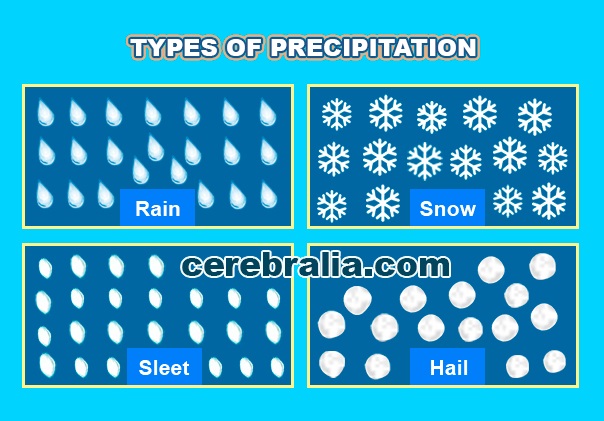Share on:
How Do Clouds Form?
In order to form, clouds require the presence of water vapor and aerosols (tiny solid or liquid particles suspended in the atmosphere) both are found abundantly in Earth's atmosphere. Water vapor, or water in its gaseous state, is transferred from the surface to the atmosphere primarily via either evaporation or evapotranspiration (the process by which water is evaporated from the tiny openings on the leaves of plants during respiration).

The air can only hold a certain amount of water vapor, depending on the temperature and weight of the air or atmospheric pressure in a given area. The higher the temperature or atmospheric pressure, the more water vapor the air can hold. When a certain volume of air is holding all the water vapor it can hold, it is said to be «saturated».
If a saturated volume of air cools or the atmospheric pressure drops, the air is no longer able to hold all that water vapor. The excess amount changes from a gas into a liquid or solid (ice). The process of water changing from a gas to a liquid is called «condensation», and when gas changes directly into a solid, it is called «deposition». These two processes are how clouds form.
As air currents rise, taking water vapor molecules along with them, they tend to cool. This vertical motion of air currents helps clouds form, by exposing its water vapor to both cooler temperatures and cloud condensation nuclei (CCN) also suspended in the atmosphere. CCN are particles that provide surfaces on which water vapor can change into liquid droplets or ice crystals. A large accumulation of such droplets or ice crystals is a cloud.
In the presence of CCN, clouds form in either of two ways:
- 1) when a region of atmosphere cools to the temperature at which water vapor condenses into water droplets or is deposited into ice crystals.
- 2) when sufficient amounts of water vapor are added to a given region of atmosphere, yielding the formation of water droplets (condensation) or ice crystals (deposition).
An important characteristic of a cloud is its temperature. When it is everywhere above 0° C, the cloud is said to be warm. Often, clouds develop at altitudes where temperatures are below 0° C, but the droplets do not freeze because of the purity of the water. Such clouds are said to be supercooled.
In the atmosphere, supercooling to temperatures of −10° C or even −20° C is not unusual. The lower the temperature, the greater the likelihood that the droplets will intercept so-called ice nuclei, which cause them to freeze. At temperatures below about −40° C, virtually all clouds are composed of ice crystals.
Clouds and Precipitation
Formation of cloud droplets is driven by diffusion of water vapour to the droplets. This diffusional growth is effective until the droplets reach approximately 20 – 30 μm diameter. For the formation of precipitation, i.e. to reach sufficient gravitational settling velocity, the droplets need to increase their diameter by approximately a factor of 100.
The diffusional growth is not sufficiently fast and the availability of water vapour is not sufficient to form precipitation in this way. Precipitation forms as smaller droplets coalesce via collision with other rain drops or ice crystals within a cloud. When the drops are heavy enough, they fall to the Earth.
If a cloud is colder, like it would be at higher altitudes, the water droplets may freeze to form ice. These ice crystals then fall to the Earth as hail, sleet, snow or rain, depending on the temperature within the cloud and at the Earth's surface. Most rain actually begins as snow high in the clouds. As the snowflakes fall through warmer air, they become raindrops.

Precipitation can more easily form in cold clouds (below freezing) than in warm ones as a result of that the former tends to form mixed phase clouds, thus containing mostly super-cooled droplet and a few ice particles.
Most clouds in the atmosphere do not form precipitation. Their life cycle ends by a change of the meteorological conditions that reduces the saturation ratio to below unity, causing the cloud droplets to evaporate.
Many all-liquid clouds, whether warm or supercooled, are stable in the sense that the droplets are limited in size to a few tens of micrometres, and the clouds may last for some time without yielding rain or snow.
Sometimes nature is deficient in ice nuclei, and as a result supercooled clouds may persist for many hours. When this is the case, the addition of ice nuclei can upset the cloud stability by causing ice crystals to form; these can then grow and result in precipitation. The introduction of any substance into clouds for the purpose of changing them is called cloud seeding.
